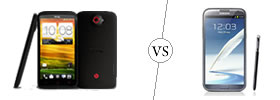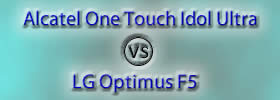Difference between Abacus and Computer
Key Difference: An abacus (plural abaci or abacuses) is a tool that is used in order to help with mathematical calculations. A computer is a general purpose device that can be programmed to carry out a finite set of arithmetic or logical operations.
An abacus and a computer are two different devices that are used for computing in today’s world. Though abacuses are old devices that have been modernized, computers are modern technology are also used for functions other than just addition and subtraction. The abacus has often been credited to playing a large part in the development of computers. Needless to say both of these devices are completely different from each other.
 An abacus (plural abaci or abacuses) is a tool that is used in order to help with mathematical calculations. Though early calculations were done on fingers and toes, it was not so very efficient to remove your shoes or sandals all the time in order to do simple addition and subtraction. This gave birth to the abacus, also known as a counting frame. This was popularly used among the traders, sellers and merchants. The use of the word abacus dates before 1387 AD in order to describe a sandboard abacus. The Latin word abacus was borrowed from the Greek ‘abax’ which means “board strewn with sand or dust used for drawing geometric figures or calculating.” This was how the original sandboard abacus actually worked.
An abacus (plural abaci or abacuses) is a tool that is used in order to help with mathematical calculations. Though early calculations were done on fingers and toes, it was not so very efficient to remove your shoes or sandals all the time in order to do simple addition and subtraction. This gave birth to the abacus, also known as a counting frame. This was popularly used among the traders, sellers and merchants. The use of the word abacus dates before 1387 AD in order to describe a sandboard abacus. The Latin word abacus was borrowed from the Greek ‘abax’ which means “board strewn with sand or dust used for drawing geometric figures or calculating.” This was how the original sandboard abacus actually worked.
The abacus is often wrongly credited to China and was originally developed by the Babylonians around 300 B.C. It was found on the island of Salamis and is known as the Salamis Tablet. The evolution of the abacus has been divided into three ages: Ancient Times, Middle Ages and the Modern Times. The Ancient Times includes the Salamis Tablet, the Roman Calculi and Hand-abacus dated between 300 B.C. and 500 B.C. The Middle Ages includes the Apices, the coin-board and the Line-board dated between 5 A.D. and 1400 A.D. The modern abacuses include the Chinese Suan-pan, the Japanese Soroban and the Russian Schoty dated between 1200 A.D. to the present.
Though the original abacuses were made up of stone, wood or metal with stones and beans to signify the numbers, modern abacuses are constructed of bamboo or wooden frame with wooden beads to represent the number. The Chinese abacus is known as a 2/5 model, where the upper deck has 2 beads and the bottom deck has 5, the Japan abacus created the 1/5 model, where the upper deck only has 1 bead and the bottom has 5 beads. The 1/5 model is more popular compared to the 2/5 model. These abacuses were most commonly used in order to carry out simple calculations such as addition and subtraction. In 1958, Lee Kai-chen invented a new model of abacus that combined the 1/5 and the 1/5 model. First half was a 1/4 soroban, while the bottom one is a 2/5 suan-pan. This is believed to deal with more complex calculations such as simplifying multiplication and division, along with being able to obtain square roots and cubic roots of numbers. Today, the modern abacuses are used in order to build mathematical skills and promote thinking.

The term ‘computer’ existed even before the development of the desktop computer. The first known computers were people. The term ‘computer’ actually referred to a job title, in which people were hired in order to perform calculations that were required to compute navigational tables, tide charts, and planetary positions. Computing day after day and hour after hour, usually ended up resulting in a few errors, where even the slight difference in calculation could result putting the astronomers off their course by a few light years. Due to getting inaccurate results every time, a machine was created that would compute the same results over and over again with the person only having to input the numbers.
A computer is a general purpose device that can be programmed to carry out a finite set of arithmetic or logical operations. A computer commonly requires a central processing unit and some form of memory. The processing unit is responsible for carrying out the arithmetic calculations and logic operations, while a sequencing and control unit that can change the order of operations based on stored information. However, a computer is not limited to just computing calculations, it can also be used to store files, transfer documents/files from one person to another and send and receive data to and from other devices via busses. During the Renaissance, the first mechanical calculator was created to perform arithmetic operations without having to rely on human intelligence. Charles Babbage is credited with theorizing and developing the first computer.
In 1801, Joseph Marie Jacquard created an improvement in his textile loom by developing a series of punched paper cards as a template which allowed his loom to automatically weave patters. This played an important part in the development of a computer, as the punched cards were viewed as some kind of a programming language. The modern form computers were developed from two different technologies, the automated calculator and the programmability. They were developed in the US and the UK between 1940 and 1945. The size of these computers was large, taking up almost a whole large room and requiring a lot of energy to run. They were originally used only for military operations. The new and more compact computers are based on an integrated system of circuits.
A computer is made up of four main components: the arithmetic logic unit (ALU), the control unit, the memory, and the input and output devices (collectively termed I/O). These parts are usually connected via busses. The integrated system of circuits usually works using a binary system, where each circuit represents a bit (binary digit) of information that is written out in 1 and 0 format. While the ALU is responsible for solving the arithmetical operations, the control unit is responsible for managing all of the other components. It is in charge of reading and interpreting the instructions, converting them into control signals and sending them to the ALU for computation. The memory stores the data where it can be retrieved from later on, when required. Any computer that is capable of performing simple operations can also be programmed to break down and solve more complex operations. An ALU can also compare numbers and return answers in true and false, known as Boolean truth values. Computers these days are becoming smaller and smaller and are being used for more purposes than just for computing.
Image Courtesy: pitch.com, energy.gov









Add new comment